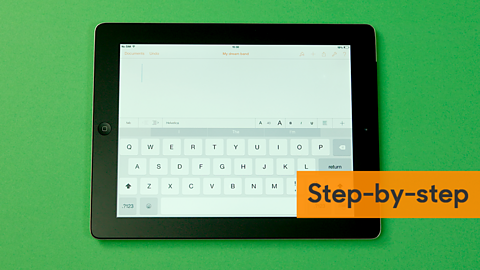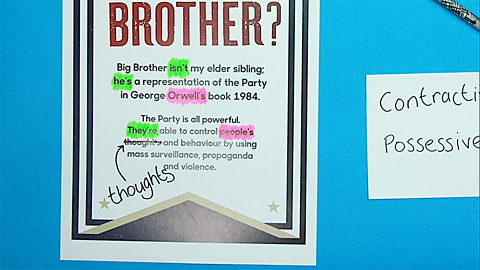Strange but true!
In 1837, two law professors at the University of Paris disagreed so strongly on the correct use of the semicolon that they decided the only way to settle the matter was through a duel!
Introduction to semicolons in a list
Writing a list sounds simple, but there are several punctuation marks you need.
colonA punctuation mark (:) used to precede a list, a quotation or an expansion or explanation. can introduce a list, while commaA punctuation mark (,) indicating a pause between parts of sentence or separating items in a list. are used to separate items in a list. For example:
You will need to bring the following: sleeping bag, pillow, pyjamas, water bottle, waterproof jacket, sweatshirt, walking boots, and swimming kit.
But what if the list included explanations or extra detail about the items? Where the list items themselves already use commas, things can get complicated. That's where the semicolon can be useful.
Find out how to use semicolons to list the members of a band
Find out how to use semicolons to list the members of a band
Step-by-step guide

Image caption, Click to see a step-by-step slideshow.
Image caption, STEP 1 – Start writing your list. Begin it with a phrase and a colon to introduce the list.
Image caption, STEP 2 – Write the first word in the list and follow it with a comma. In this example we are using the band member's name, which is a proper noun.
Image caption, STEP 3 – Write the second part of the list item, in this the case the role of the person in the band or the instrument they play.
Image caption, STEP 4 – Follow the item in the list with a semicolon.
Image caption, STEP 5 – After the semicolon write the second item on the list. Again in this example, it will be the name of a band member.
Image caption, STEP 6 – Continue listing items in this way until you have finished your list, and then end it with a full stop. And there we have it, the dream band!
1 of 7
Examples of using semicolons in a list
Look at the following example:
You will need to bring the following: sleeping bag, pillow, and pyjamas for the overnight stay; water bottle, waterproof jacket, sweatshirt, and walking boots for the afternoon trek; and a swimming kit for the river activities.
Here, a colon introduces the list and semicolons indicate which parts of the list are grouped together.
Here's another example:
Last year we travelled to Dorchester, Dorset; Edinburgh, Scotland; and Whitby, North Yorkshire.
In this example, commas help to separate town names from more general locations, and semicolons show which of the place names and locations are grouped together.
Find the items on the list
Test your knowledge
Fill in the gaps
Quiz
More on Punctuation
Find out more by working through a topic
- count5 of 6

- count6 of 6

- count1 of 6
